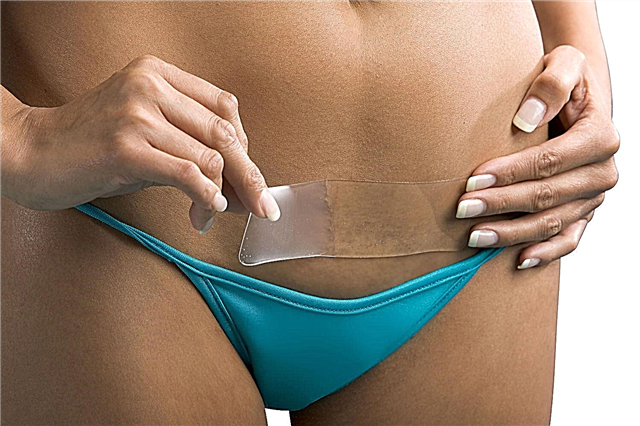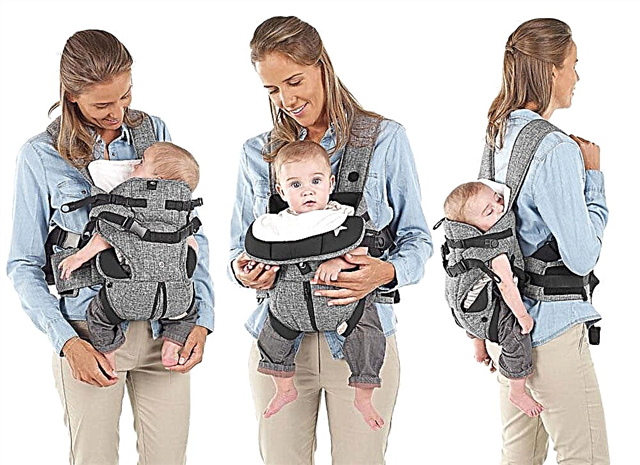According to doctors, high temperature should be treated as an auxiliary factor, the participation of which should be timely and at the same time short-lived. However, most often this symptom, which has arisen in a child, causes panic in his parents, in connection with which all forces are sent to eliminate it. The article will discuss why a child has a temperature of 40, what to do in this case, what actions it is better to refrain from, whether it is necessary to bring down the fever.

Fever in a child is a natural cause for concern for every parent.
Temperature 40 in a child
The onset of fever is a normal (and even necessary) reaction of the body to pathology, which strives for self-healing. In this way, he fights infection and harmful substances that have entered the body. Since fever is a symptom of a disease, when it occurs, it is necessary to deal with, first of all, the elimination of the cause (that is, pathology), and not the effect (fever). It is important to remember that sometimes a high temperature is still dangerous for the life and health of the patient. In such cases, it is necessary to lower it and seek qualified help as soon as possible.
Elevated body temperature can be conditionally divided into several categories:
- Light heat (38-38.5 oC);
- Moderate (38.6-39.5 oC);
- Strong (above 39.5 oC);
- Critical level (above 40.5-41).
On a note. The reaction of the child's body is individual in each case. If a child, for example, suffers from a cardiovascular disease, even a mild fever may pose a threat to him.

High fever is a sign of normal functioning of the immune system
Fever in children does not in itself pose a threat to life and health. It is a stimulant of the body's immune system. Children from an early age can bring down the temperature above 38.5 degrees with the help of antipyretic drugs. One way or another, if the thermometer readings have reached 39.5-40 degrees, the child should be shown to the doctor.
The child needs immediate medical attention in the following cases:
- In an infant aged 3 months or less, rectal temperature reaches 38 degrees or higher;
- High fever is not confused with medication and rubdown;
- The child has a petechial rash;
- The infant becomes dehydrated;
- The child cries all the time.

Drinking plenty of fluids at high temperatures
Possible reasons
A high thermometer indicates that an inflammatory process is taking place in the child's body. A variety of factors can cause such a reaction:
- Babies under the age of 3 months are not yet able to perfectly regulate their body. Therefore, if you wrap the baby in several layers of clothing or in a very thick blanket, the body may not cope with thermoregulation, and the child will develop a fever.
- Infection. This is the most common reason. A high temperature indicates that the body is actively fighting viruses or bacteria.
- Graft. If we speak exaggeratedly, then when a child is vaccinated, a small amount of infection is introduced into his body. This is done so that the immune system learns to cope with viruses and bacteria. The temperature in this case can rise for the reason that the body reacts to the vaccine as to a common disease.
- Heatstroke. If a child overheats in the sun or in a stuffy room, his body temperature can rise to 40 degrees or even higher. He has weakness, dizziness, pulse quickens, no sweating.
The most common cause is infectious diseases:
- Inflammation of the soft palate. It occurs due to contact with dry air, pathogenic organisms. The disease is characterized by sore throat, cough (especially in the morning), hoarseness.
- Laryngitis. Common in infants. The disease can cause a temperature of 40 in a baby.
- Tracheitis. Causes a prolonged dry cough (especially in the morning). Sometimes phlegm may drain. The disease provokes contact with damp air or infectious agents.
- Angina. It is accompanied by severe sore throat, redness of the mucous membrane, cough.
- Inflammation of the bronchi. There is a severe cough with a small amount of sputum, chest pain.
- Pneumonia. It is accompanied by severe respiratory failure.
- Tonsillitis. It is characterized by a sore throat and discharge of pus.
Viral pathologies that can cause a child's temperature to rise up to 40 degrees include:
- Flu. It is accompanied by cough, sore throat, muscles, eyeballs, aching bones. The disease is unpredictable and can cause serious complications.
- ARVI. A general diagnosis that includes many viral infections.
Diseases that involve damage to internal organs can also cause a high fever in a child:
- Pyelonephritis, nephritis.
- Ulcer, colitis.
- Arthritis.
This list includes only a small part of the possible causes of high temperatures.
The causes of fever include hormonal disorders:
- Damage to the nuclei of the hypothalamus (the appearance of a neoplasm in the brain may become a provoking factor).
- Problems in the thyroid gland. In particular, hyperthyroidism leads to the overproduction of hormones, as a result of which the body temperature rises significantly.

There are many causes of fever
Parental actions at high temperatures
Pediatricians recommend knocking down temperatures above 38.5 degrees. This can be done in the following ways:
- Give your child more water. Drinks should be at room temperature.
- Make cool compresses. To do this, moisten a towel, wring it out and put it on your forehead. You should also wipe the armpits, temples and neck. Due to the evaporation of moisture from the surface of the skin, the body will begin to cool and the baby will feel better.
You should know! Rubbing with alcohol or vinegar is ineffective.
- Wipe your body with warm water.
- Observe bed rest.
- Give the patient an antipyretic medicine. It can be Paracetamol or Ibuprofen. These drugs are actively used in pediatric practice. The form of funds is different (tablets, suspensions, suppositories, syrups). The choice depends on the individual characteristics of the organism and the symptoms of the disease. Suppositories and suspensions are most often given to young children. The dosage is usually given by weight.
- If febrile seizures are observed, an ambulance should be called immediately. Before the arrival of the doctors, the child is laid on its side, the head is pulled back and made sure that the tongue does not sink.
- It is not necessary to bring the temperature readings to normal. A sharp drop in temperature can negatively affect the well-being of the child. One should not expect an immediate effect from drugs.
- If the temperature does not go astray for a long time, you need to call a pediatrician. The doctor will make a diagnosis, conduct research (for example, a clinical blood test, a general urine test). An ambulance should be called only if clearly necessary, as the child will most likely be injected with a lytic mixture to relieve fever. The fact is that the tool has a number of side effects and prevents accurate blood tests from being obtained.
- A doctor should be called in if the child has other complaints (other than fever). The same should be done if the temperature rises to 40 in a one-year-old child. An increase in temperature even up to 38 degrees in babies up to 3 months requires a mandatory examination by a specialist.
- If a child with a high temperature gets cold hands and feet, then there is no reason to panic. This is a symptom of the so-called peripheral vasospasm, in which blood is concentrated in the area of the brain and heart. In this case, the child can be massaged, rubbed, and put on warm socks on his feet. It is better to refuse the use of vasodilators.
- Do not neglect folk remedies.

Compress is a great way to bring down the heat
What not to do
When the child's temperature rises to 40 degrees, one should not resort to such measures as:
- Wrapping the child in several blankets or otherwise trying to keep him warm. Excessive insulation prevents sweat from evaporating and thus prevents the body from cooling.
- Heat or humidify indoor air. These conditions make it easier for bacteria to enter the respiratory tract. In addition, high humidity prevents perspiration from evaporating. Drafts should be avoided.
- Apply mustard plasters, alcohol compresses, take hot baths or showers, drink hot drinks.
- Drink sugary drinks.
- Cool the body with vodka or alcohol. The evaporation of these fluids from the surface of the body occurs too quickly, as a result of which the baby's body can be stressed and his condition worsen.
An increase in the child's body temperature to 40 degrees is a reason for a medical examination. At the same time, it is not necessary to call an ambulance in all cases - most often it is enough to consult a pediatrician for advice. Parents can also take independent actions to eliminate a fever in a child a year at home (including using folk remedies to eliminate fever). If the child's temperature rises above 40, then an ambulance must be called.



